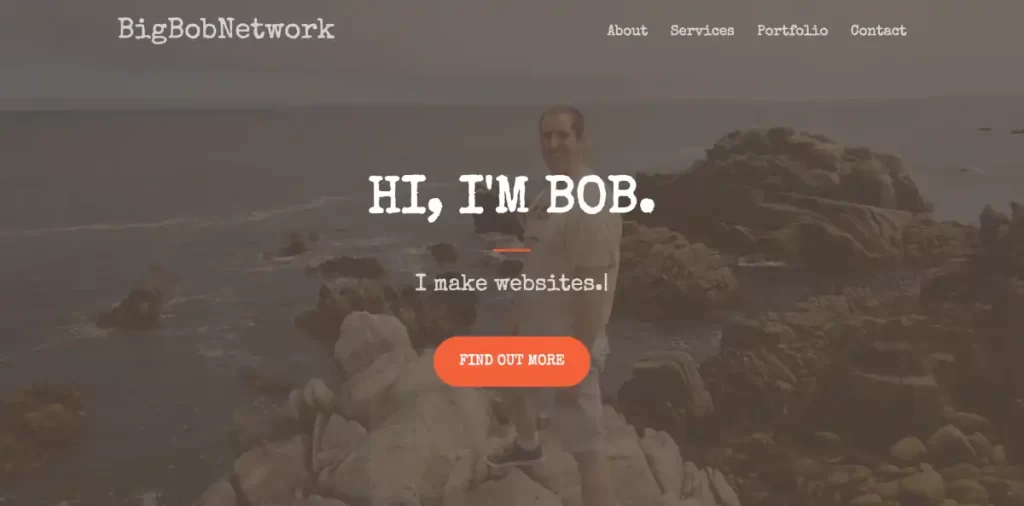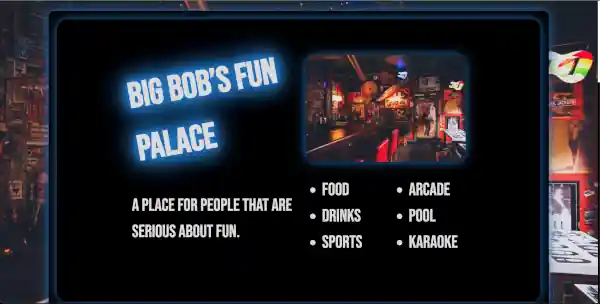Do you have a job? Do you use the internet? If the answer to both of these questions is yes, then you can benefit from a profile website. This is especially true if you work for yourself.
How People Use the Internet
If you’re a human being that performs almost any kind of service imaginable, then you have a reasonable justification for building a profile website to promote yourself. As of the publication of this post, the number one used website on the internet is the Google search engine. It is number one by a large margin, and number two is it’s sister company YouTube.
After those two websites, you would have to add together several of the next most popular websites to achieve the same number of visits for the visit count of either of the top two websites. That means all of your other social media websites combined may only account for a fraction of the traffic running through Google Search, and that fraction would become a fraction of a fraction if you combined it with the influence of YouTube.
Feel free to verify whether or not this data is still accurate.
The Results of the Hard Math
Yes, people can still search for your social media accounts through Google. But if they do that, are they really searching for you? If they land on your social media page, how long does it take for the social media site to give a list of your competitors.
If you had your own website, then people could be coming to you directly. You could be taking full control of the narrative. If you don’t do this, then the narrative will always be framed by somebody else and juxtaposed against a sea of competitors ready to replace you. The hard math is that each one of us is just one of eight billion. And the internet is the foundational media mechanism for the entire world. If you don’t even have your own website, how special can you expect to appear to be?
Future Proofing Your Identity
What if one of the social media services that you use changes it’s policies in a way that causes your profile to be irrelevant? Even worse, what if the social media company shuts down your profile, or the social media company collapses? You and all your media could go out of business overnight.
Having your own profile website means you will maintain your online presence even if your other media platforms become unreliable.
What Does a Profile Website Need to Look Like?
You shouldn’t think of a profile website as a mechanism to necessarily replace your social media. You should think of your profile website as a mechanism to serve at the very least as a landing page for your social media. If your social media pages have vehicles for your business that are superior to what your website can easily facilitate, then you should keep using social media.
Owning Your Profile Website
It’s important that you don’t simply use a service that provides a series of links to your social media accounts. These services have a bad reputation among social media companies and sometimes get banned and regarded as spam websites. Even if you can get away with using one, you still risk having your reputation hurt by being affiliated with one.
When you own your website, you have maximum control over the content. Even if your website starts out as nothing more than an about section and a list of your social media links, it still serves as a foundation to becoming something much bigger.
Should You Use a CMS?
I would recommend that the foundation of your website should either be Bootstrap or WordPress. Bootstrap is fast and more flexible than WordPress, but Bootstrap is also more complicated to use and content creation and updates tend to take longer to develop. If you choose Bootstrap and you’re not a developer, then you should probably hire a professional to work with.
First you can take a look at an example of my profile using Bootstrap:
Next you can take a look at an example of a real estate agent’s profile using WordPress:
When you consider which type of profile website you want to build, you should consider that you can extend a Bootstrap site with a WordPress site.
Profile Website Potential
The biggest benefit of having a profile website is your visitors don’t need an account to access your information. Also, a profile website can be used to do things that social media doesn’t do as well.
A profile website can be used to blog.
And a blog can be used to list upcoming events.
A profile website can act as a sample of your social media for people that don’t currently have accounts to your social media. You can explain how your different social media accounts integrate with each other, or how they integrate with your business.
Landing Page (Using the WordPress Media and Text Block)
Below you can see an example from my Big Themes subdirectory. It uses the media and text block at the top of the page. This is one of the simplest and most effective ways to build a landing page. It looks good, it responds well to different screens, and it is relatively easy to make it mobile friendly.

Using a Background Image on Your Profile Website
If you use a media and text block, then you will be left with a fair amount of negative space on large screens. You can see an example of this in the screenshot above. A background image is a great way to take that negative space and fill it in with something more colorful.
You can manage your page width to make the background image stand out.
Using a Navbar on Your Profile Website
If your profile website contains multiple pages, then you will need to use a navbar. However, if your profile website only has one page, and it only contains a few sections of content all of which are short, then you may decide that you don’t need a navbar at all.
Below is an example of a website for a bar. Although it does not technically constitute a profile website, the layout could easily be repurposed to service one.
Repurposing Content Patterns on Your Profile Website
It is best to not try to reinvent the wheel when you are building your profile website. You can use all of the examples in this article to repurpose existing content patterns to facilitate your content. If you are using WordPress, then this can be done with block patterns.
Working With a Professional on Your Profile Website
You may have avoided building your own profile website because you like working by yourself. And that’s a great attitude to have if you want to own your profile website. But if you want your profile website to be profitable, sometimes you have to spend a little money to make a lot of money.
If you work with a professional, then you will make sure that your profile website is set up right. You won’t have to worry about making a bunch of rookie mistakes that you might not notice, but your customers do. Once a professional has your profile website set up properly, then you can take over. If you read this blog, then you’ll have the resources you need if you run into a problem. And if you already have a professional as a resource, then you’ll have somebody that you can contact if you’re in a jam that you can’t get out of.




